“Bullying happens when a group or individual person consistently abuses someone or another group physically, verbally, mentally or emotionally due to an imbalance of power. This can be because of their identity, background, religion or appearance.“
This definition is on the Testbourne Anti Bullying Charter.
The school works hard to ensure that all students know the difference between bullying and simply “falling out”. Friendship fallouts occur at times and occasionally there will be conflict between students. Bullying occurs where there is an imbalance of power that is persistent and deliberate.
Bullying behaviour can include:
- Emotional – Being unfriendly, excluding, tormenting.
- Physical – pushing , kicking, hitting, punching or any use of violence.
- Sexual – unwanted physical contact or sexually abusive comments.
- Direct or Indirect Bullying – name calling, sarcasm, spreading rumours, teasing.
- Cyber bullying – all areas of the internet, such as email and internet chat rooms AND SOCIAL MEDIA MISUSE. Mobile threats by text messages and calls. Misuse of associated technology ie cameras, video facilities and game consoles.
- Harassment – systemic and / or continued unwanted and annoying actions of one party or a group, intending to disturb, threaten or upset.
- Prejudice based Bullying – also known as identity based bullying refers to any form of bullying related to the characteristics considered unique to an individual’s identity. These forms of bullying are not only targeted at an individual, but reflect negative attitudes towards a wider sub- community or a group to whom that individual identifies with. Prejudice- based bullying can be separated in to 9 characteristics unique to a child’s identity, these are:
- Race or ethnicity: bullying directed towards an individual which relates their skin colour, ethnicity, or national identity. Includes racial taunts, graffiti or gestures.
- Gypsy, Roma and Traveller: because of or focusing on being a member of a travelling community.
- Asylum seekers and refugees: because of or focusing on being from refugee and asylum seeking backgrounds.
- Religion or belief: bullying motivated by prejudice against an individual’s perceived or actual religious or spiritual beliefs and practices.
- Learning disability/difficulty: Bullying of an individual who has an impairment which affects the way they learn, understand, socialise and communicate (i.e. speech and language difficulties).
- Disability: Bullying of an individual who has a physical or mental impairment. For example, mobility, visual or hearing impairments, epilepsy, diabetes or a progressive condition such as multiple sclerosis.
- Homophobic: bullying because of or focusing on the issue of sexuality.
- Gender: bullying based around sexist attitudes or sexually inappropriate behaviours, intended to either demean or humiliate an individual because of their sex.
- Transphobic: bullying directed towards an individual whose gender identity is seen as being different to typical gender norms.
To view our Anti-bullying policy, please find it on our Policies page.
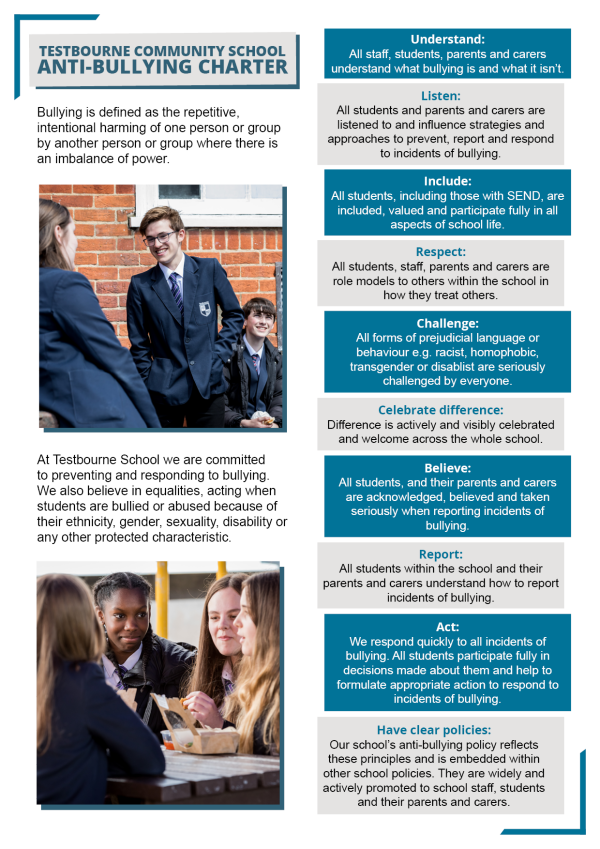

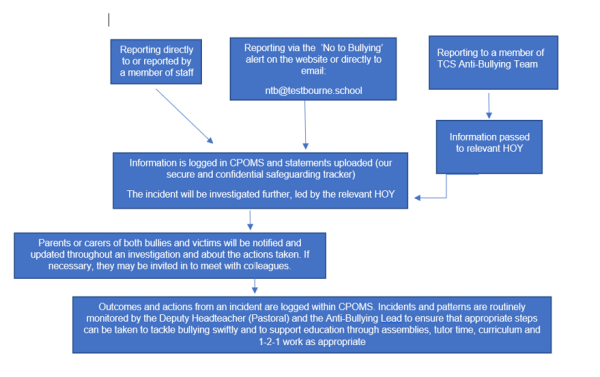
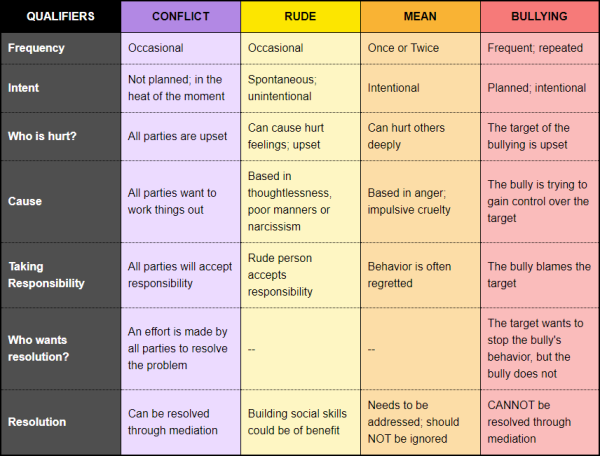
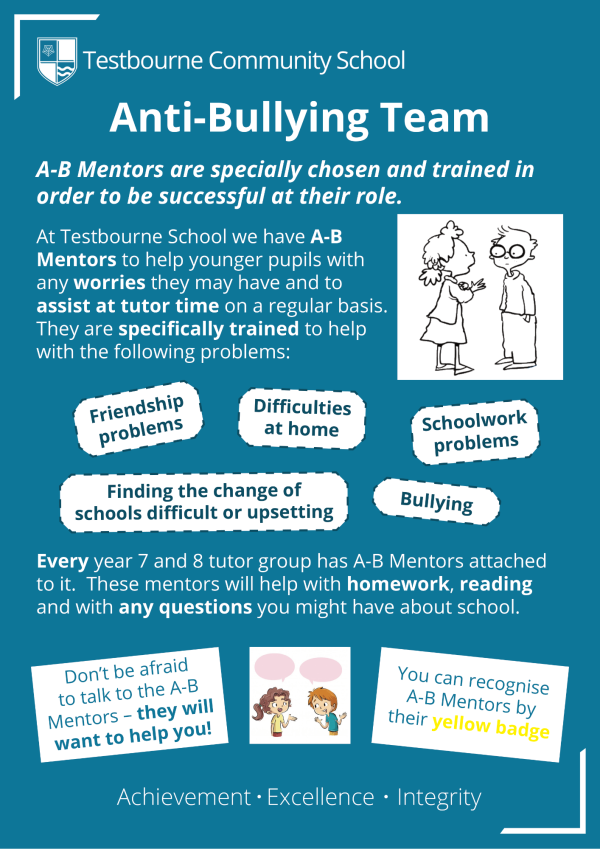
 Testbourne Community School
Testbourne Community School